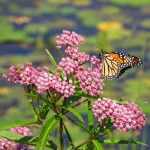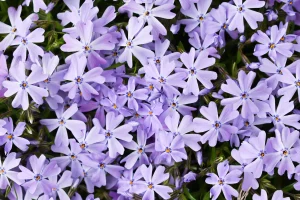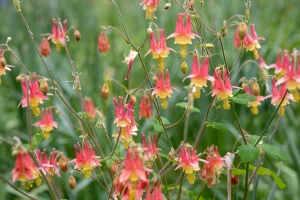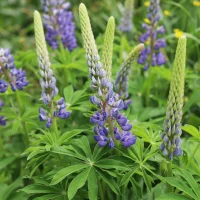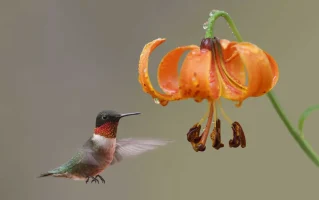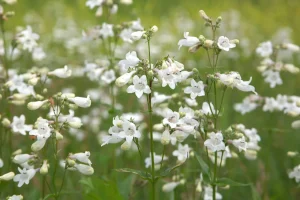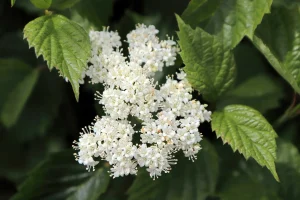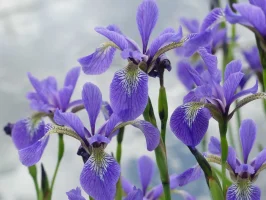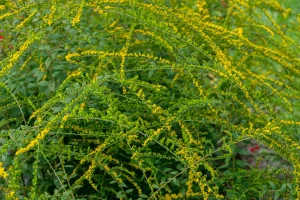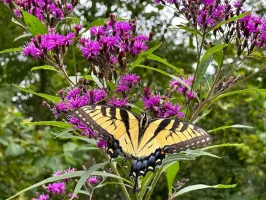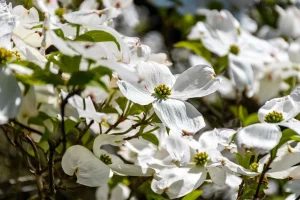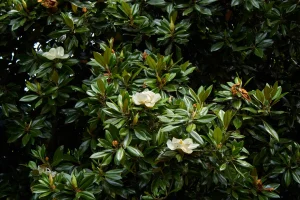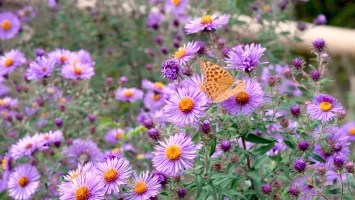Without milkweed, there would be no Monarch butterflies. Milkweed is the host plant for the Monarch butterfly. Monarch butterfly moms only lay their eggs on milkweed, and Monarch caterpillars only eat milkweed leaves.
There are 100+ species of milkweed native to North America, offering different types for every region. Native milkweeds like sun or part sun, and different species offer flowers from pink to orange and a variety of heights. Let’s all plant milkweed, ASAP.
Monarch *caterpillars* ONLY eat milkweed
Dig Deeper
Explore the history, types, and where to plant native milkweed
Table of Contents
Monarch *caterpillars* only eat milkweed
Monarch caterpillars are the pickiest eaters: they only eat one plant—milkweed. Because of this, Monarch butterfly moms only lay their eggs on milkweed plants. This ensures that when the baby caterpillars emerge, they have lots of food to eat.
Many caterpillars only eat ONE or a few PLANTS: these plants are called host plants. These monogamous plant-caterpillar-butterfly relationships exist for some pretty amazing reasons. In the case of the Monarch, eating milkweed gives Monarchs special powers that help them survive. Read on to find out how.
Milkweed gives Monarchs special powers
Milkweed is toxic to almost all creatures except the monarch:
- The plant’s sap, leaves, and roots contain a toxic compound called cardiac glycosides that are poisonous to other plant eaters, like other bugs and deer.
- Eating milkweed can cause an animal or bug to vomit, become paralyzed, or even die.
- Monarchs have evolved to be able to eat milkweed and be fine.
Eating milkweed gives Monarchs superpowers throughout life because they hold onto the toxicity in their bodies. When a predator snacks on a monarch, the milkweed’s toxic residue tastes disgusting and can cause the predator to vomit! Predators remember this and don’t try Monarchs twice. Eating milkweed is necessary for Monarchs to survive.
Why is it called milkweed?
Milkweed’s toxic sap is also what gives it its name: its sap is milky white.
Monarch *butterflies* eat all the nectar they can find
While the Monarch caterpillar is the pickiest eater, Monarch butterflies are not. Once the caterpillar emerges from its cocoon as a gorgeous Monarch butterfly, it’s ready to sip any nectar it can find. This is why you see monarch butterflies flitting around lots of garden environments, visiting a range of flowers. You’ll also see lots of YouTube videos with butterflies sipping on cut-up fruit.
But you’ll only see Monarch caterpillars on milkweed.
Monarch *butterflies* eat all flowers
We’re missing 90% of the Monarchs
Sadly, over the past 20 years, the Monarch population has dropped by an astonishing 90%. This is due to the loss of milkweed, its host plant. The Center for Biological Diversity estimates that during these last 20 years Monarchs “may have lost more than 165 million acres of habitat—an area about the size of Texas—including nearly a third of their summer breeding grounds.” We can help reverse the Monarch population decline by planting milkweed wherever we can.
It’s time for all of us to grow milkweed.
Types of native milkweeds
There are 100+ native milkweed species found in the United States. You’ll know it’s milkweed when you see the Latin name Asclepias. There are specific milkweed varieties for every type of climate, except one variety—Common Milkweed—is native to the entire continental US. Here are some native milkweeds found at native plant nurseries throughout the US, organized by region.
Native Milkweed for the Continental United States
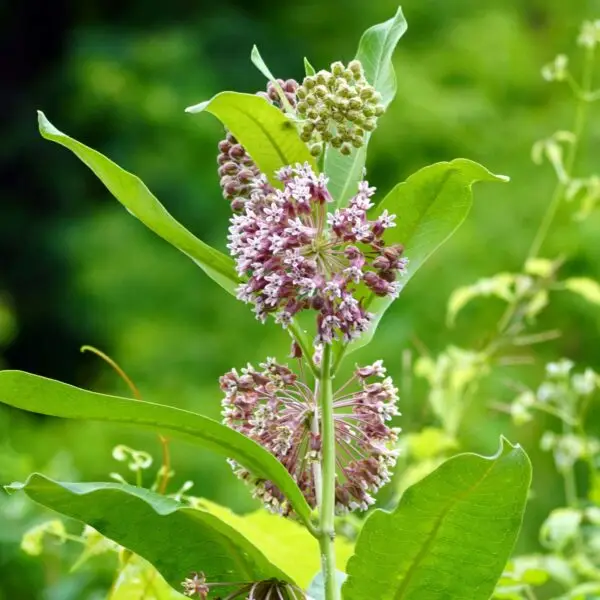
Common Milkweed
Asclepias syriaca
No matter where you live in the continental US, you can plant Common Milkweed—it is native to most of North America. Common Milkweed is a tall perennial (3-5 feet!) with clusters of pink or purple flowers. Common Milkweed likes dry, sunny areas.
Native Milkweed for the Eastern Half of the United States

Butterfly Weed
Asclepias tuberosa
Butterfly Weed is a shorter milkweed (1-2 feet) with clusters of bright orange flowers. Because Butterfly Weed is short, it’s useful for borders. Butterfly Weed grows from Maine to South Dakota, and south to Florida. Butterfly Weed has a long taproot (like a carrot) making it difficult to move once it’s planted but very drought tolerant. Butterfly Weed is very easy to plant by seed; seeds planted in the spring will flower later that summer.

Red-ring Milkweed
Asclepias variegata
Native all the way from New York state to Texas, this gorgeous milkweed stays relatively short (1-3′) with bright white fistfuls of flowers. Get up close, and you’ll see a delicate reddish-purple ring of color in the center of the flowers. Stunning.

Swamp Milkweed
Asclepias incarnata
Swamp Milkweed is tall (3-4 feet) with bright pink flowers that smell amazing. (Only a few milkweed flowers have a smell.) The name can be misleading: Swamp Milkweed grows in a wide range of water—from average to wet areas. Their range also makes them good choices for rain gardens. Swamp Milkweed grows in Eastern Canada and in every state in the United States except Arizona, Mississippi, and states with a Pacific coastline.

Whorled Milkweed
Asclepias verticillata
One of the most delicate milkweeds, Whorled Milkweed has needle-like leaves and ivory-white flowers. It is native from Massachussets all the way west to North Dakota and south to New Mexico. It’s tiny, too! Just 1-2′ tall. Whorled Milkweed likes dry, rocky soils.Native Milkweed for the Western Half of the United States
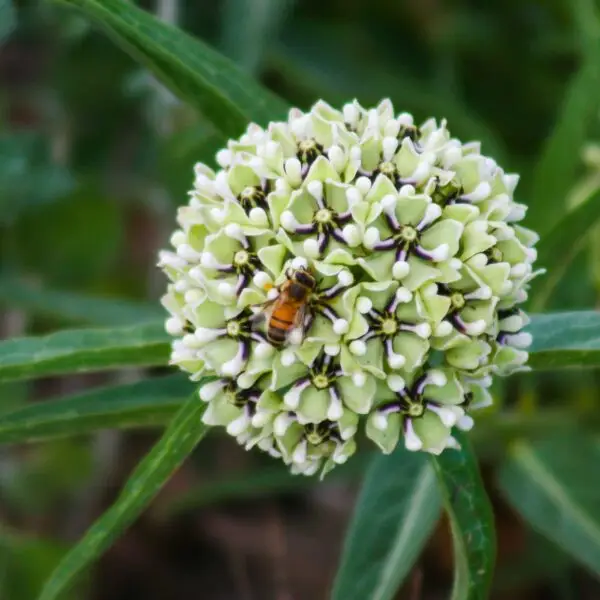
Antelope Horns Milkweed
Asclepias asperula
Antelope Horns Milkweed is an absolutely stunning native milkweed that is a must-plant for anyone living in the southwest (see its range here.) This milkweed loves the dry, arid climate of the southwest.

Narrow Leaf Milkweed
Asclepias fascicularis
Narrow Leaf Milkweed is the milkweed to plant in California. This plant is highly drought tolerant and is the main food source for western monarch butterflies. Find a California nursery near you that stocks this plant!
And there’s more native milkweed species…dozens more. We’ll continue to add to this list regularly, but to give you an example of how many milkweeds are present within a region, the Mid-Atlantic region alone has twelve milkweeds (although a few are rare and unavailable commercially.)
There is one species that is sometimes sold at plant nurseries to steer clear of. Stay away from Tropical Milkweed—here’s why:
Do NOT plant Tropical Milkweed
Asclepias curassavica
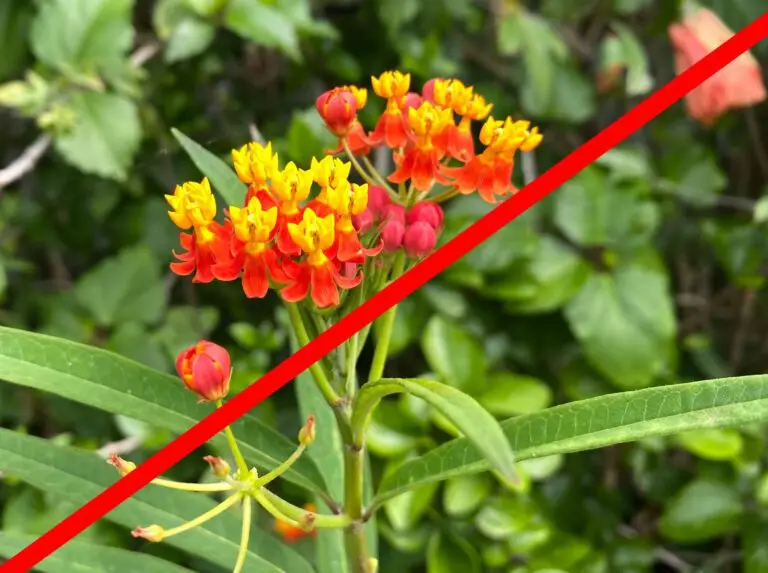
Tropical Milkweed is native to South America, and sadly can host a parasite that kills monarchs. It also confuses monarchs: “When grown in northern areas, where it can grow later in the year than native species, the presence of tropical milkweed may confuse monarchs into breeding at a time when they should be migrating. In California, where this milkweed is widely planted, it can be growing near overwintering sites along the coast and may spur monarchs to breed when they should be overwintering.” (Xerces Society)
Which milkweed is native to my area?
Xerces Society offers milkweed guides organized by region or state that list the milkweed varieties that are native. It’s a great resource to see the varieties that are native to your area. They also offer a way to search for places to buy milkweed seed in their Milkweed Seed Finder.
Another easy way to find which milkweed is native to your area is to visit native plant nurseries nearby and ask. Local nurseries know your region, soil, and growing conditions. Stop by and speak with a nursery specialist about which milkweeds are available and will work well for your area.
When in doubt, unless you live in Alaska or Hawaii—plant Common Milkweed.
Milkweed cultivars
There are several cultivars of milkweed that have been developed for different reasons, such as to get different flower colors or different heights. Some examples of milkweed cultivars include:
- ‘Ice Ballet’ Swamp Milkweed: This cultivar has white flowers and grows to about 2-3 feet tall.
- ‘Silky Gold’ Butterfly weed: This cultivar has bright yellow-orange flowers and grows to about 1-2 feet tall.
Cultivars offer lots of new colors and variety for our gardens, but can confuse bugs with their different appearance, or not offer the same level of nutrients as a true native plant. When possible—plant true native plants over cultivars.
Native vs. Cultivar
Plant true native plants whenever possible. Cultivars (short for CULTivated VARieties) are selected and made by humans and do not offer the same benefits to bugs, birds, and animals that native plants do.
What about butterfly bushes?
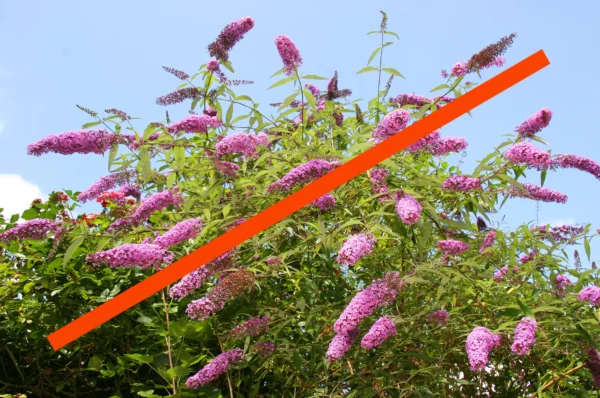
“Butterfly bushes” are a true testament to the power of naming and marketing. Butterfly bushes are native to Asia. While the flowers do provide some nectar for butterflies when in bloom, butterfly bushes are not host plants for any North American butterflies. Think of Butterfly Bushes like soda for butterflies—they are a sweet treat for adults but don’t offer the food or habitat of a host plant.
Replace all butterfly bushes with milkweed.
Hummingbirds love milkweed, too!
How to grow milkweed
Milkweed is very easy to grow and exceptionally easy to keep alive over the years. They are:
- Low maintenance: no fertilizer or special needs are required for milkweed to thrive
- Longtime bloomers: their flowers are often open from June to August!
- Perennials: they will come back year after year. Once you plant them and they are happily established, you can enjoy them in your yard for years to come.
Milkweed likes sun or partial sun
All milkweed types like full sun or partial sun. Grow milkweed in a sunny area surrounded by shorter, native flowers. Milkweed is perfect along driveways and in front sunny gardens.
No pesticides or herbicides
Avoid using pesticides or herbicides near milkweed plants, as they can harm the monarch butterflies and caterpillars that rely on the plant.
Plant at least 5 plants (if you can)
The more plants you plant, the easier it will be for mom Monarchs to find and lay their eggs and for the larvae to have enough food and shelter to survive. In general, plant at least five individual plants in an area if you can.
Where can I find milkweed for my garden?
Milkweed is getting more attention and slowly becoming more available at plant nurseries. To help you find a wide range of options for your yard, here are four recommendations for sourcing milkweed:
Where can I find seeds and plants?
Finding native plants can be challenging (we partly blame Marie Antoinette.) To make it easier, we’ve assembled four sourcing ideas.
Native Plant Nurseries
Our list of native nurseries makes finding one a breeze
Online Native Plant Sellers
We've included 100+ online resources to help
Society Plant Sales
Every state has a native plant society; find yours
Online Communities
Local Facebook groups are a great plant source
What to plant with milkweed
A good rule of thumb when picking garden pairings is to choose plants that are very different in texture and hue, to help each of the plants’ differences shine. Milkweed has bright clusters of flowers, so they look great against many other flowers and grasses. Asters, Bee Balm, Black-eyed Susan, Blazing Star, Coneflower, Little Bluestem, Obedient Plant, Rattlesnake Master, are all fantastic pairings for milkweed.
In conclusion: plant milkweed today. And tomorrow, too.
Milkweed is the only food for monarch butterfly caterpillars. It is the only plant that monarch moms will lay eggs on. Milkweeds are exceptionally easy to plant and there is a native variety that will thrive in any space (from dry to wet) in every single place in that continental US. They are also beautiful flowers! Visit your local native plant nursery, order seeds online, or look on local plant message boards to find some milkweed for your garden. And don’t forget to plant some other natives to keep it company! Explore our native plant library for more inspiration.
Next steps and resources:
There are lots of well-known plants that have native options available. Explore our beginner guides to native favorites:
Sources
- Harstad, Carolyn. Go Native! Gardening with Native Plants and Wildflowers in the Lower Midwest. (1999), 133-134.
- Johnson, Lorraine. 100 Easy-to-Grow Native Plants for American Gardens in Temperate Zones. (1999), 33.
- Korbonits, David. The Meadow Plants at Mt. Cuba Center. (2012), 34-37. (PDF)
- Nelson, Gil. Best Native Plants for Southern Gardens: A Handbook for Gardeners, Homeowners, and Professionals. (2010).
- Wheeler, Justin. Xerces Society, “Tropical Milkweed—A No Grow.” April 18, 2018.
- Florida Wildlife Foundation, Milkweed (PDF).
